Research shows that the foot has more sweat glands than any other part of the body. It also has 26 bones, 33 joints, and more than 100 muscles, ligaments, and tendons made of strong, flexible tissues that keep all the moving parts together.
In fact, the foot is an evolutionary miracle because it can handle hundreds of tons of force every day, which is your weight in motion. All of the parts of the foot, like the toes, heel, and ball, work together to help you move around. But because they have to carry you around, your feet are more likely to get hurt than any other body part.
And a lot of foot and toe problems, like hammertoes, blisters, bunions, corns and calluses, claw and mallet toes, ingrown toenails, toenail fungus, and athlete’s foot, can be caused by not taking care of your feet, wearing shoes that don’t fit right, or just normal wear and tear.
Foot pain could be the first sign of a bigger problem in the body. For example, the joints in the feet are often the first to get gout. So, what can you do to find and treat common foot health problems?
Athlete’s Foot
Athlete’s foot usually happens between the toes and on the sides of the feet. This is because an athlete’s foot is a fungus that likes warm, dark, and moist places. It can make the skin red and swollen and give it a white, flaky rash with a red base. Athlete’s feet can also cause itching, burning, peeling, and sometimes even a faint smell.

Athlete’s foot, also called tinea pedis, is less likely to happen if your feet and toes are clean and dry, if you change your shoes and socks often and if you don’t walk around barefoot in public locker rooms and showers. Penn Medicine says that you can treat athlete’s foot with antifungal creams or sprays you can buy over the counter. You can also use sprays and powders inside your shoes to kill any fungus that is still there.
If these don’t work, you may need to see a doctor and ask about stronger medicine that you can only get with a prescription. Penn Medicine says that if the problem isn’t taken care of, it can spread to other parts of the body. It can also spread to other people through surfaces like floors, gym mats, towels, and other things that people share.
Hammertoes
You may have a hammertoe if your second, third, or fourth toe is hooked, bent in the middle of the joint, or just points in an odd direction. The Cleveland Clinic says that hammertoes can be caused by shoes that don’t fit right, and your genes may also make you more likely to get them.
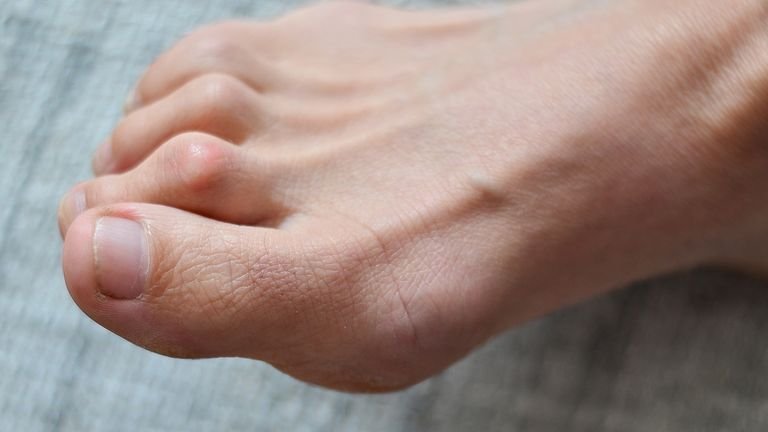
If your toe is still bendable, your doctor may tell you to wear shoes with more room and more comfort. Also, inserts or foot pads can help move your toe back into place. But, according to the Mayo Clinic, if your toe stays bent, the pain will start, and you may need surgery. When hammertoes rub against the insides of your shoes, corns and calluses can form on them.
Blisters
Allan M. Boike, head of the College of Podiatric Medicine at Kent State University in Ohio, says that blisters are mostly caused by friction between the skin on your foot and the inside of your shoes. Blisters, which are soft, raised areas of skin filled with clear fluid, can be avoided by wearing shoes and socks that fit well and are the right size.
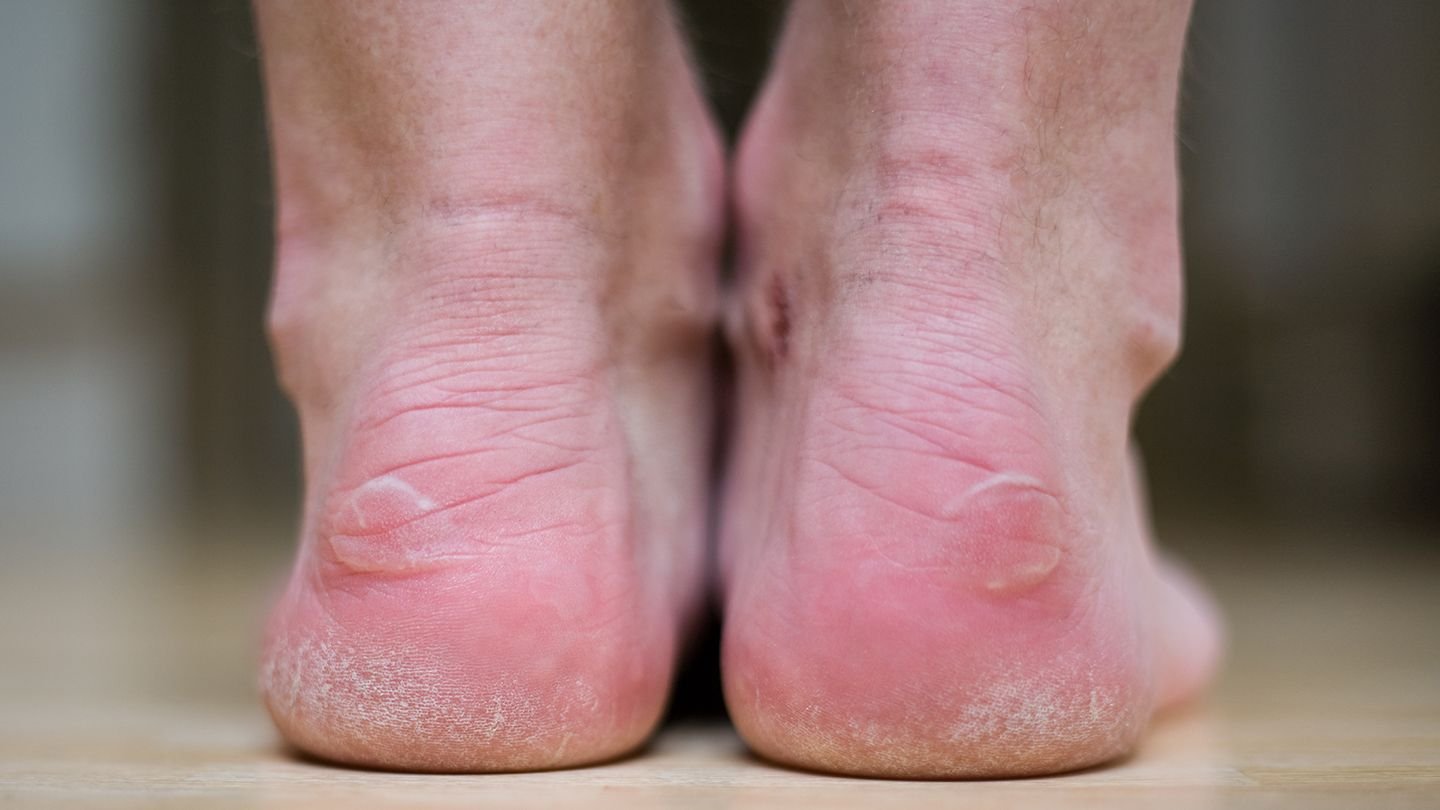
Dr. Boike says that if you get blisters, it’s best to let them break on their own rather than pop them yourself, even if they hurt and make it hard to walk. “If you get a blister, just put a bandage on it and let it burst on its own,” says Boike. “If it bursts, you can put an antibiotic ointment on it and cover it with a bandage to help it heal and keep it from getting infected. However, you should keep the area covered to reduce friction and keep it from coming back.”
Most foot blisters don’t need to be treated by a doctor. But if you have diabetes or another health problem that makes you more likely to get infections, Boike says you should see a doctor before you treat any blisters on your own.
Bunions
A bunion is a hard bump at the joint where the big toe meets the second toe. The Mayo Clinic says that the changes in the foot that cause the bump also cause the big toe to turn in toward the other toes. Bunions can be caused by birth defects, arthritis, injury, heredity, or wearing shoes that are too small in the toe area all the time.
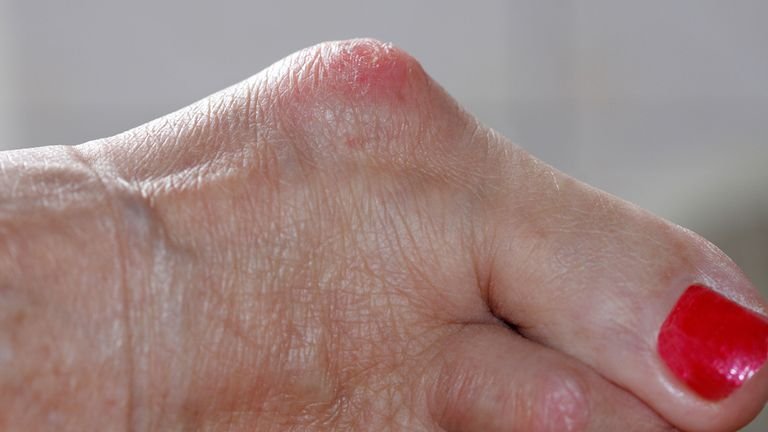
No matter what caused the bunions in the first place, high heels and tight shoes can make them worse. Conservative treatments for bunions include bigger shoes, padded shoe inserts, and painkillers you can buy without a prescription. The Mayo Clinic says that if these ways don’t help relieve pain and let you walk normally, surgery may be suggested to help put the big toe back where it should be.
Corns and calluses
The Cleveland Clinic says that corns and calluses happen when there is repeated rubbing against a boney part of the foot. This is usually caused by shoes that don’t fit well.
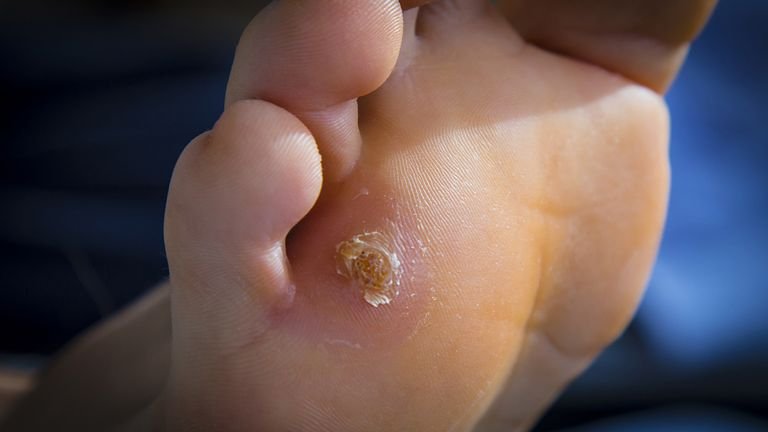
Corns can show up on the tops, sides, and between your toes. Calluses, on the other hand, usually show up on the bottoms of the feet, especially under the heels or balls of the feet, and on the sides of the toes. It can be hard and painful to walk on these clumps of dead skin cells.
If you have a lot of corns or calluses, you can treat them by scraping off the extra skin. The Cleveland Clinic says to soak the affected area in warm water until the skin softens, then remove the dead skin with a wet pumice stone or emery board. But be careful. If you take off too much skin, you could get a cut or an illness.
You can also soften the skin over time by putting a moisturizing cream or oil on the corn or callus and the dead skin around it.
If this doesn’t help, you may need to see a podiatrist, who may suggest putting moleskin or padding around corns and calluses to ease the pain.
Plantar Fasciitis
Plantar fasciitis is a painful condition in which the ligament (called the fascia) that ties the ball of the foot to the heel becomes inflamed or even tears. Tracey C. Vlahovic, DPM, a podiatrist and clinical professor at the Temple University School of Podiatric Medicine in Philadelphia, says that the only visible signs or symptoms of plantar fasciitis are pain and stiffness in the foot.

Research shows that the condition is common among runners and other athletes of all kinds, but Dr. Vlahovic says it’s usually thought of as an overuse injury that almost everyone can get.
“Most of the time, we send people to physical therapy, where they can learn stretches to loosen up the tightness in the medial band of the foot,” says Boike. Less than 10% of the people Boike sees who have heel fasciitis need surgery to fix the problem.
Putting a cold pack on the area can help ease the pain. Boike says that your doctor may also tell you to wear a splint at night to stretch the hurt foot.
Claw Toes and Mallet Toes
The joint where the toes meet the foot on a claw toe curls up, while the joints in the middle and end of the toe curl down. This makes the toe look like a claw. When claw toes rub against shoes, they often get calluses and corns. Claw toes can be caused by tight shoes or nerve damage in the feet, which can be caused by diabetes or other diseases that weaken foot muscles.

When you have mallet toes, the joint at the tip of the toe bends downward, and painful corn often grows where the toe presses against the ground. Most of the time, it affects the second toe because it is the longest. Mallet toe can be caused by things like injuries and arthritis, says the Cleveland Clinic.
Gout
Boike says that gout is a type of arthritis that happens when the body can’t handle the amount of uric acid in the blood. This causes uric acid to build up in the joint tissues and fluid. Even though gout isn’t a foot disease in and of itself, this buildup often starts in the joint of the big toe. This is because the toes are the coolest parts of the body, and Boike says that uric acid crystallizes when the temperature changes.
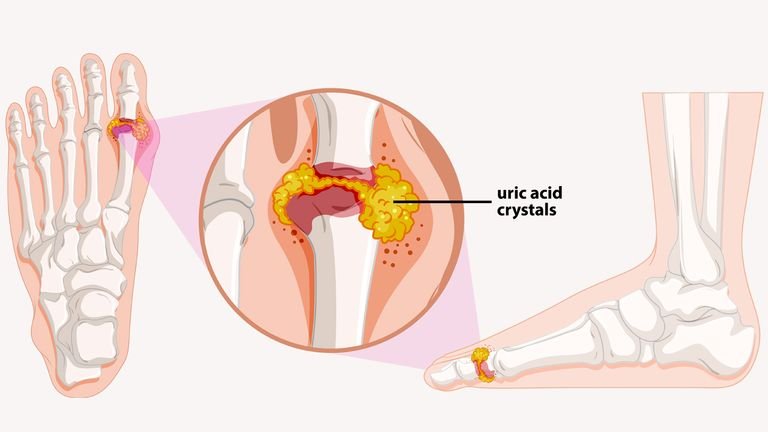
You’ll probably know when you’re having a gout attack because the joint where your big toe meets your foot will be hot, red, swollen, and painful to the touch.
Boike says that you can lower your chance of gout attacks by changing your diet to avoid foods that raise your uric acid level, like red meat, seafood, and alcohol, especially beer.
He says that people who drink a lot of beer or booze (more than one drink per day) are more likely to have an attack of gout. Research released in American Family Physician says that being overweight and having chronic kidney disease are also risk factors.
Keeping your weight at a healthy level also seems to help a lot with avoiding gout attacks.
Boike says that if you are in the middle of a gout attack, drinking water to stay hydrated and staying in bed may help. However, if you have frequent attacks, your doctor will probably send you to a rheumatologist to help you deal with the condition.
He says that medications for gout are meant to lessen pain during acute attacks or stop the body from making uric acid so that attacks happen less often.
Even though gout usually starts in the foot, it can spread to other joints, where uric acid can build up and form crystals. This makes it hard to move, which is why Boike says it’s important to treat the cause, not just the symptoms.
Ingrown Toenails
Ingrown toenails can be avoided by cutting your toes straight across and not too short. If you don’t cut your nails straight, the edges or corners can dig into your skin and cause pain or an infection called paronychia.

The Mayo Clinic says that shoes that squeeze your toes together and nails that are bent in a strange way can also cause ingrown toenails.
If you get an ingrown toenail, you can try soaking the toe in warm water for 15 or 20 minutes several times a day and putting a small piece of cotton or dental floss under the ingrown edge of the nail to help it grow up and away from the skin.
The Mayo Clinic says you should see a doctor if home remedies don’t work or if you have diabetes or another condition that causes less blood to flow to your toes. The doctor may lift or remove the affected nail and suggest using a topical antibiotic to avoid an infection.
Fungal Nails
Fungus on the toenails can make the nails look ugly and misshapen. It can also spread to other nails, like the ones on your fingers.
Toenail fungus often grows when the nail-skin joint, which is where the nail meets the skin of the toe, is broken by damage to the nail. This can happen after a pedicure, from shoes that don’t fit right, or from running or climbing over and over again, which causes the nail to lift or get pressed on.

Vlahovic says that toenail fungus is caused by a fungus that likes to live on skin, hair, and nails. “The fungus likes the protein in the nail bed, and the toenail is a great place for it because it spends most of the day inside your shoes, which are moist and warm.”
Toenail fungus can be hard to get rid of because it often comes back even after it has been treated. You should talk to your doctor about getting an antifungal drug on prescription since over-the-counter treatments aren’t likely to work.
The Mayo Clinic says that if medicine doesn’t help, you may need surgery to fix the damage that lets the fungus take hold.
Courtesy: https://www.everydayhealth.com/foot-health-pictures/common-foot-problems.aspx
